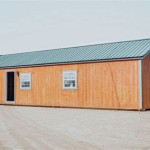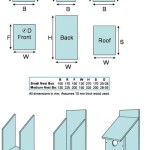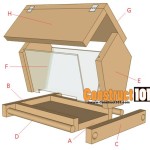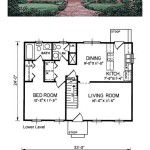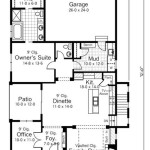Plans for Building Wood Duck Houses
Wood ducks, known for their vibrant plumage and intricate courtship rituals, are a delightful addition to any wetland environment. Providing nesting habitat for these ducks can enhance their populations and contribute to the overall health of the ecosystem. Building a wood duck house is a rewarding project that can attract these beautiful birds to your property.
Understanding Wood Duck Nesting Preferences
Wood ducks are cavity nesters, meaning they rely on pre-existing cavities in trees for nesting. They prefer nesting boxes that are located near water, ideally within 100 feet of a pond, lake, or stream. The ideal nesting site is also usually within 10-20 feet above the water level. Wood ducks prefer a secure nesting cavity, ideally with a small entrance hole that provides protection from predators.
Building Materials and Dimensions
A wood duck house can be constructed from various materials, but cedar, redwood, or pressure-treated lumber are recommended for their durability and resistance to moisture. The dimensions of the nesting box are critical for providing a comfortable nesting space for the ducks. The following dimensions are recommended for a standard wood duck house:
- Height: 16-20 inches
- Width: 10-12 inches
- Depth: 10-12 inches
- Entrance hole diameter: 4 inches
- Entrance height: 6-8 inches from the bottom of the box
The entrance hole should be positioned on the side of the box, facing away from the prevailing winds. A roof overhang should be included to protect the nesting cavity from rain. The bottom of the box should also be raised slightly off the ground or platform to facilitate drainage.
Construction Steps
Building a wood duck house is a relatively simple process, and detailed plans are available online. The following steps outline the basic construction process:
- Cut the lumber: Cut the lumber to the specified dimensions and use a drill press or hand drill to create the entrance hole.
- Assemble the box: Nail or screw together the four sides of the box, ensuring that the corners are square and the entrance hole is positioned correctly.
- Attach the roof: Create a simple roof using two boards that overhang the sides of the box. Attach the roof to the box using hinges and a latch for easy access.
- Add drainage holes: Drill 1/4-inch drainage holes in the bottom corners of the box to allow water to escape.
- Install a perch: If desired, you can install a small perch inside the box, just below the entrance hole, to give the ducks a place to rest.
- Paint and seal the box: Paint the exterior of the box with a non-toxic paint or stain, and seal it with a waterproof sealant to protect it from the elements.
Installation and Maintenance
Once the house is constructed, it needs to be installed in a suitable location. You can mount the house on a post, tree, or platform, ensuring that it is stable and secure. It is important to place the house near water, but also make sure it's not too close to any human activity that might disturb the ducks. It's also crucial to install the house at least 10 feet off the ground to discourage predators like raccoons, snakes, and squirrels.
Regular maintenance of the wood duck house is essential to ensure its longevity and suitability for nesting. This involves cleaning out the old nesting material at the end of the breeding season, inspecting for signs of deterioration or damage, and making any necessary repairs.

Scdnr Wood Duck Box Construction

Wood Duck Nest Box State Of Tennessee Wildlife Resources Agency

Woodworking For Wildlife Wood Duck Box

Wood Duck House 70birds Birdhouse Plans Index

State Parks Getaways And Wildlife E Newsletter

Wood Duck Box Plans

Duck House Plans For Wood Houses Unique

How To Build A Duck Nest Box

Wood Duck Nest Box
How To
Related Posts

